Carbon warning over Glasgow flats demolition
- Published
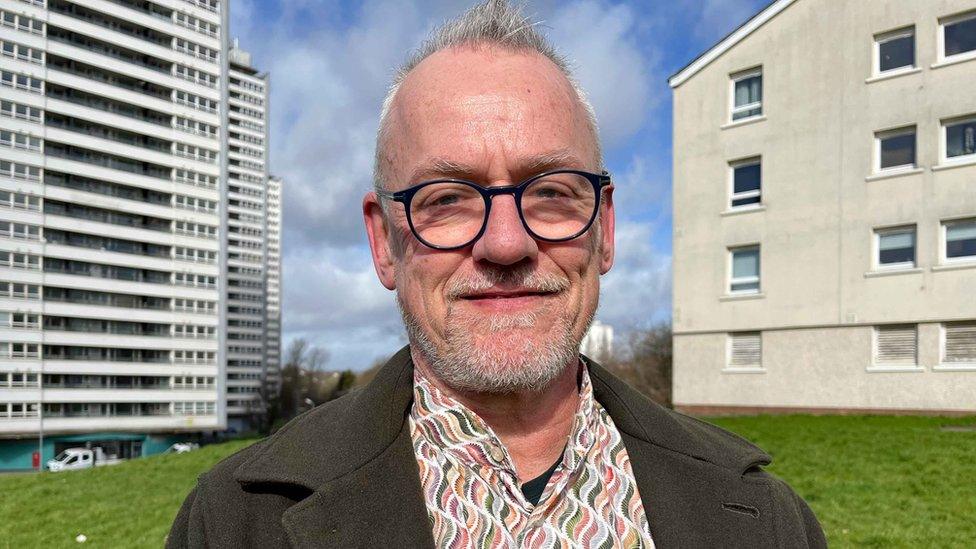
Malcolm Fraser says the flats could be retrofitted with a different design
One of Scotland's leading architects says vast amounts of carbon will be wasted if four Glasgow tower blocks are demolished rather than refurbished.
Malcolm Fraser says knocking down the Wyndford flats in Maryhill would effectively release 47,000 tonnes of embodied carbon.
The flats are among several buildings earmarked for demolition in the city.
The developers say the Wyndford flats are not fit for purpose and could not be refurbished.
But acting on behalf of a local residents group, Mr Fraser has produced a report suggesting they could be retrofitted with a different design.
The term "embodied carbon" describes the amount of greenhouse gas emissions used to create the fabric of a building, such as concrete and steel - which are very energy intensive.
Although some materials can be recycled to a point, demolishing and replacing a building means that energy has to be expended again.
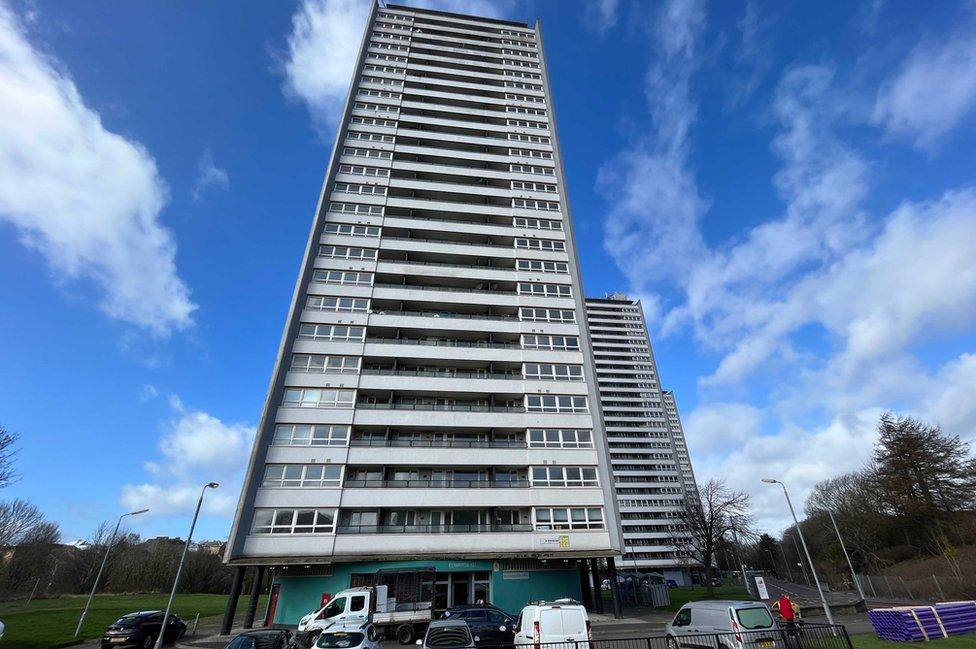
A group of residents is opposed to the demolition of the Wyndford flats
Mr Fraser said: "All the energy and effort which went into making these buildings, that's what makes carbon. Knocking it down loses that.
"If you try and recycle it, grind it up and make it into something else, you lose all that benefit.
"It's making useful, adaptable homes here. We need to keep it at that."
It is estimated that 47,000 tonnes of embodied carbon would be the equivalent of charging more than 5.7 billion smartphones.
Concern has been growing in recent years about the number of buildings which are being demolished and replaced without significant consideration given to whether they could be adapted instead.
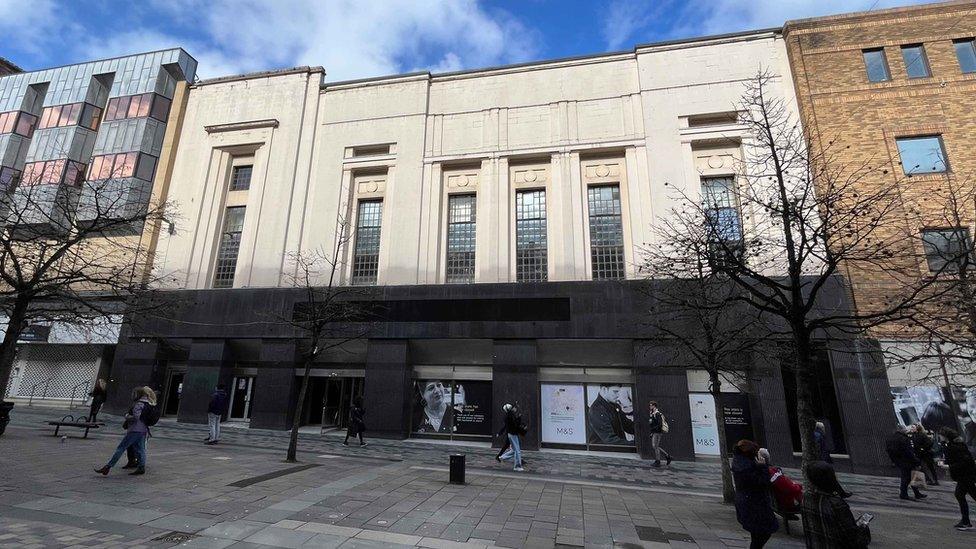
The former Marks and Spencer building on Sauchiehall Street is earmarked for demolition
The old Marks and Spencer building on Sauchiehall Street in Glasgow has been earmarked for demolition so it can be turned into new student accommodation.
With a slight art-deco style to its design, the building has stood there since the 1930s. Only the historic facade is expected to be retained.
The Glasgow City Heritage Trust argues that future construction should allow for buildings to be repurposed.
Director Niall Murphy said: "If you want a long life in a building it should have a loose fit so that it's adaptable over time.
"That's really what we should be doing in Glasgow city centre. A lot of these buildings could be easily readapted to a new use."
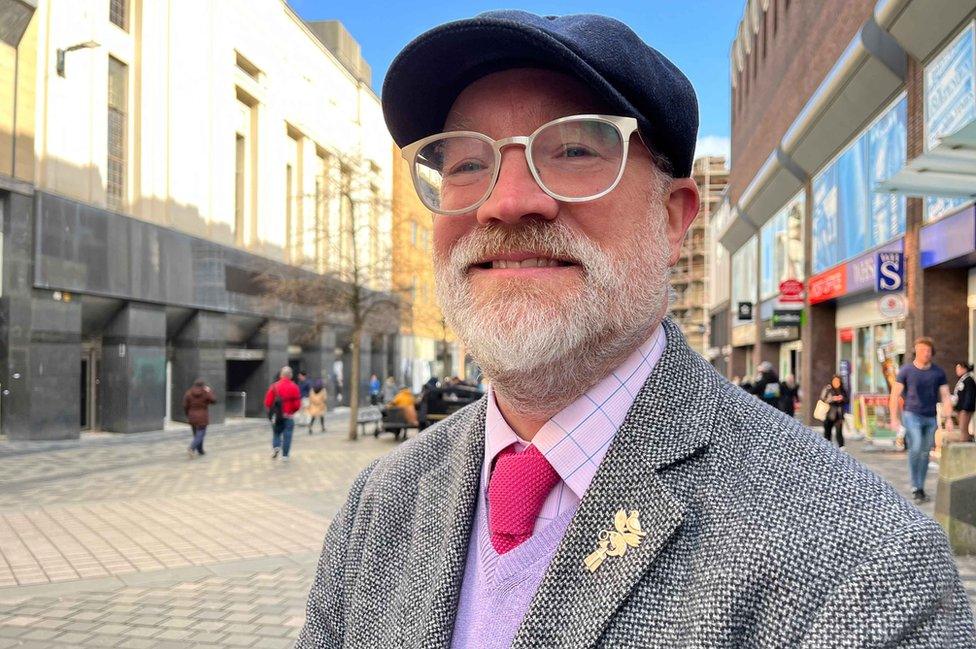
Niall Murphy says buildings should be adapted to a new use
There are also plans to demolish the 17.5 million sq ft Buchanan Galleries shopping centre.
The 10-year project would involve replacing the existing mall with a mix of places to shop, eat, socialise, work and live.
It is also planned to create more green spaces.
Heather Claridge, an urban planner from Architecture and Design Scotland, says government policy encourages developers to consider repurposing first - but the tax regime does not support it.
She said: "Embedded in our policy at the moment is a strong encouragement to reuse first.
"The financial factor is a challenge when you have to pay VAT on retrofit, versus new build - which doesn't have to pay VAT."
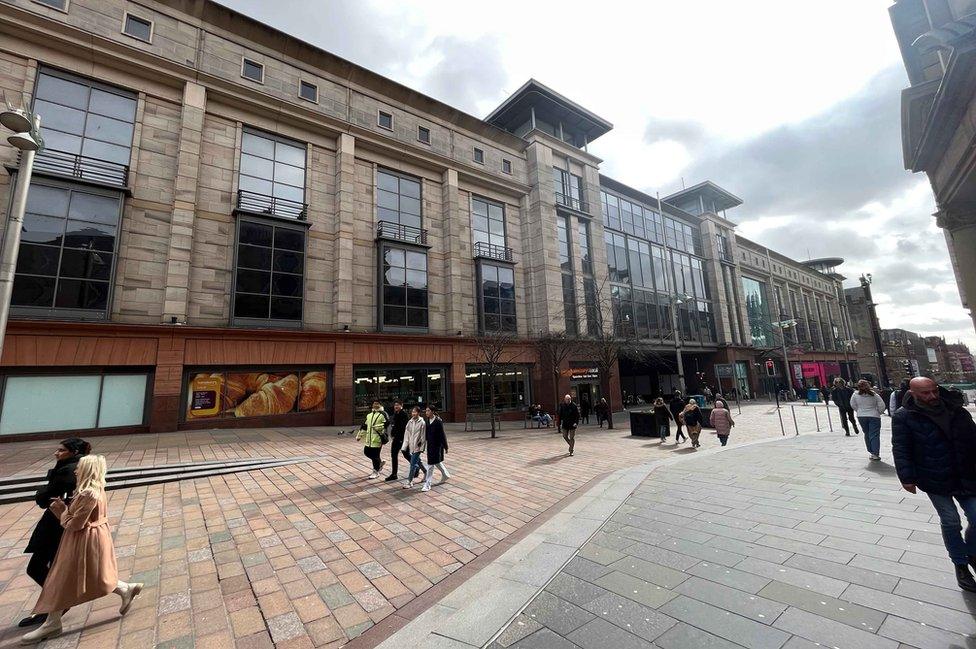
There are plans to demolish the Buchanan Galleries shopping centre
The plan for the Wyndford flats involves a £73m investment to create hundreds of new homes on the site of the existing tower blocks.
A residents group wants the flats to be modernised rather than demolished.
But Wheatley Homes Glasgow, which manages the properties, insists the majority of residents support their proposals.
A spokesman added: "A structural engineer report found the four blocks cannot be safely reconfigured, as cutting through the thick concrete walls would compromise their structural integrity and stability.
"A separate architectural study declared the blocks 'not fit for purpose'.
"That all adds up to a very clear and compelling case for demolition."